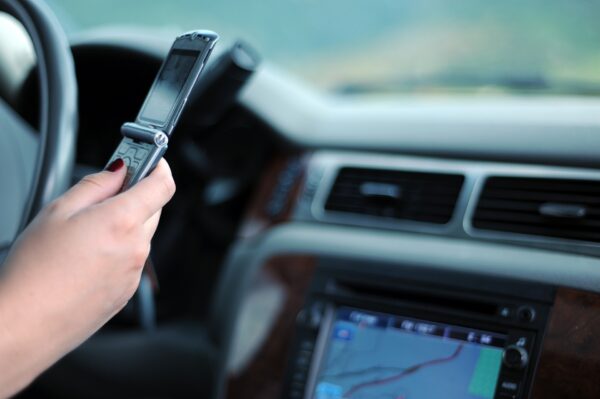
The latest Maine cellphone laws and hands-free law went into effect on September 19, 2019. In large part, the law was passed in an effort to reduce distracted driving accidents in the state. Although distracted driving is a problem everywhere, for Maine drivers or those driving in Maine, the issue has become a serious problem and a deadly one. The Insurance Information Institute places Maine at 13 fatalities per year per one-hundred thousand people due to distracted driving. For a state-ranked at the lower end in population and population density, it has emerged at the top of the list in distracted driving fatalities for the entire northern and eastern regions of the U.S. from Michigan eastward.
What is the Hands-Free Law?
Though, by definition, any non-driving activity that impairs the manual, cognitive, or visual ability of a driver is considered a distraction, few would argue the impact that cellphones and electronic devices have had as a primary source of distracted driving. Calling or answering the phone, talking, texting or reading messages, using the phone’s map app or the car’s navigation system are major contributors to the number of distracted driving accidents.
Why was it passed in Maine?
The Maine hands-free driving law of September 2019 is comprehensive and thorough. It prohibits drivers from holding any electronic device not part of a motor vehicle’s operating system. Unless specifically exempted, for instance, in emergency circumstances or if using a phone is within the scope of a person’s employment, no one can operate a motor vehicle, per law, while “using, manipulating, talking into or otherwise interacting with a handheld electronic device or mobile telephone, including but not limited to the use of a handheld electronic device or mobile telephone while the vehicle is temporarily stationary because of traffic, a traffic light or a stop sign.” If you need to hold the phone or send and answer text messages, a driver must pull over to a safe area off of or to the side of the road and park their motor vehicle to do so.
In short, what you can no longer do while driving:
- Hold a phone or mobile device
- Write or send any message
- Read any messages
- Watch or record any videos or activate or sort audio on a mobile phone or device.
- Reach for a phone by getting out of your seat or removing your seat belt
In other words, the hands-free law is just that. You can place or answer a phone call while driving, but you cannot hold the phone to your ear to do it. Many cars today have phone-activated features right on the steering wheel that allow drivers to respond or call. Cellphones can also be mounted or affixed to the vehicle dash or console to activate or deactivate the phone with a simple touch of a finger.
Hands-free also means there is no texting while driving. Simply put—it is illegal to text when you are driving. You may voice activate messages to send or listen to, but otherwise, you must pull off the road and safely park to read or send text messages.
What to do instead:
- Mount your phone on the window, console, or dashboard of your vehicle.
- Use Bluetooth devices like car kits and earpieces.
- Enable auto-reply messages on your phone while you’re driving. This will let your loved ones know you will get back to them when you reach your destination.
It should be noted that drivers under the age of 18 or with an intermediate license or a permit cannot use a phone or handheld device while operating a motor vehicle.
Electronic devices such as a vehicle’s navigation system or a phone’s GPS must be activated before driving. Unless the device has voice interactive command features, drivers must pull off the road and park safely to enter a new address for any change in destination or address.
What happens when motorists ignore this law?
There are consequences for those who ignore the law. Violators will be subject to severe penalties. A fine for texting is not less than $250 for a first offense and doubles to $500 and a minimum 30-day license suspension for repeat offenders. The license will be suspended without the right to a hearing. If there is an accident involved while driving and texting, it could lead to a “driving to endanger” conviction, which can carry up to six months in jail, a maximum fine of $1,000, and 30 to 180 days license suspension. If the accident results in a fatality, it could lead to the possibility of vehicular homicide charges.
Distracted driving is a serious problem that the State of Maine takes seriously. All drivers should know the current laws relating to cellphone usage while operating a vehicle. Ignorance of the law is no defense for those caught using handheld electronic devices while driving.

